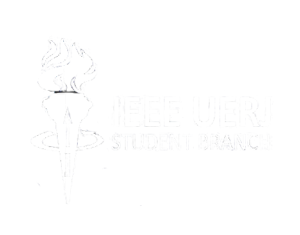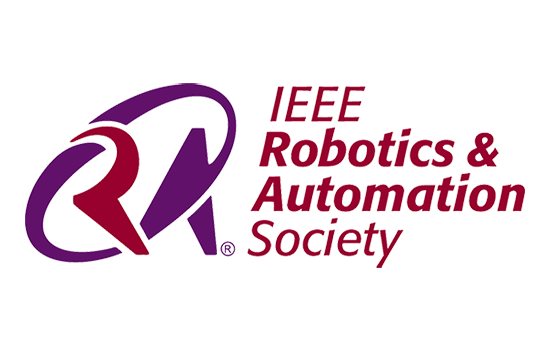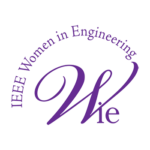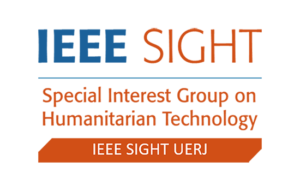Projects
IEEE Power and Energy Society & Industry Applications Society
- Renewable Energies in schools
- SmartGrid
- Solar Recharge Station
What is?
The Renewable Energies in Schools (RES) project aims to bring greater knowledge about renewable energies to the school environment. The chapter decided to focus on high school/technical students, where they are preparing to enter the workforce. The project will be in conjunction with the affinity group IEEE WIE UERJ with the intention of encouraging not only the debate on renewable energies, but also of women in science.
Main Challenges:
Presenting and teaching diverse audiences from schools and institutions: Preparing presentations to empower the audience of a particular school will be part of your routine!
- Develop educational kits to use during classes: Renewable energy educational kits are great for teaching audiences in a more dynamic and fun way.
What is?
The Smart Grid project includes several areas of study and implementation within several areas of engineering, especially electrical, electronics and telecommunications.
The main idea of the project is to be able to measure in real time, or close to real time, the consumption of electricity in a given location with materials at very low prices.
The project is currently divided into three sub teams: electronics, PHP and Android development.
Main Challenges:
Electronic equipment assembly: Applying some sensors together with the Arduino, the project members aim to improve the Arduino script to perform as accurately as possible.
Reception, treatment and storage of data: The programming part will be developed in the back end area and also helping with the integration of server with Android Application.
- Android Application Development: Helping in the development of an Android application so that the end user can have available the measurement data performed with the electronic components.
What is?
The Posto de Recarga Solar project aims to use solar energy to recharge cell phones. Initially it was thought of a charging station for cell phones as they would serve a larger portion of the institution and later with the progress of the project, design for bicycles or even electric cars.
With this idea, in addition to reducing electricity consumption, we could show how the use of solar energy is viable, easy to install and brings numerous benefits.
Main Challenges:
Study and research of software, platforms and knowledge used in the project: Study concepts that are directly related to the project. It is recommended to have a basic understanding of electronics. If not, the teacher and the members involved in the project are willing to guide according to the need and difficulties faced by the new volunteers when dealing with the project’s contents and activities.
IEEE Power and Energy Society & Industry Applications Society
- Practice English with IAS
- Renewable Energies in schools
- SmartGrid
- Solar Recharge Station
- Training
What is?
English is the most widely spoken language in the world, facilitating communication and international relations between different people. In addition, the language practice allows to expand knowledge, report work on a world stage and develop professionally.
Practice English with IAS aims to contribute to the language at the university through discussion groups with the participation of students, thus helping students in a highly requested modality.
Main Challenges:
Interactive Conversation: Engage people of different levels in an interactive conversation on a pertinent subject, in addition to mediating the conversation and valuing the development of the group.
- Materials and content: Search for materials that can nurture the discussion such as periodicals, music, games. In other words, content available for free and easily accessible.
What is?
The Renewable Energies in Schools (RES) project aims to bring greater knowledge about renewable energies to the school environment. The chapter decided to focus on high school/technical students, where they are preparing to enter the workforce. The project will be in conjunction with the affinity group IEEE WIE UERJ with the intention of encouraging not only the debate on renewable energies, but also of women in science.
Main Challenges:
Presenting and teaching diverse audiences from schools and institutions: Preparing presentations to empower the audience of a particular school will be part of your routine!
- Develop educational kits to use during classes: Renewable energy educational kits are great for teaching audiences in a more dynamic and fun way.
What is?
The Smart Grid project includes several areas of study and implementation within several areas of engineering, especially electrical, electronics and telecommunications.
The main idea of the project is to be able to measure in real time, or close to real time, the consumption of electricity in a given location with materials at very low prices.
The project is currently divided into three sub teams: electronics, PHP and Android development.
Main Challenges:
Electronic equipment assembly: Applying some sensors together with the Arduino, the project members aim to improve the Arduino script to perform as accurately as possible.
Reception, treatment and storage of data: The programming part will be developed in the back end area and also helping with the integration of server with Android Application.
- Android Application Development: Helping in the development of an Android application so that the end user can have available the measurement data performed with the electronic components.
What is?
The Posto de Recarga Solar project aims to use solar energy to recharge cell phones. Initially it was thought of a charging station for cell phones as they would serve a larger portion of the institution and later with the progress of the project, design for bicycles or even electric cars.
With this idea, in addition to reducing electricity consumption, we could show how the use of solar energy is viable, easy to install and brings numerous benefits.
Main Challenges:
Study and research of software, platforms and knowledge used in the project: Study concepts that are directly related to the project. It is recommended to have a basic understanding of electronics. If not, the teacher and the members involved in the project are willing to guide according to the need and difficulties faced by the new volunteers when dealing with the project’s contents and activities.
What is?
The project aims to organize and develop technical training for the group based on the knowledge of the chapter’s volunteers. Technical materials and partnerships with companies will be developed throughout the project.
Main Challenges:
Planning and organizing the event: To carry out these trainings, several factors must be taken into account, such as: dissemination on social networks, choice of the online meeting platform and availability of speakers and organizers.
Contact potential people to provide training: Make formal contact in advance to allocate the training in the Branch’s activities calendar.
IEEE Robotics and Automation Society
- Home Automation
- Robotic Arm
What is?
The project’s initial objective is to facilitate and make automatic some common tasks that in a conventional house would be the responsibility of its residents. We intend to expand such technologies and concepts applied to projects such as smart cars, manufacturing, smart grids, etc.
With this, we have the general objective of controlling, monitoring and optimizing processes, ensuring more convenience, economy and, consequently, quality of life.
Main Challenges:
Control: Control devices through smartphones and microcontrollers. In this step, the ESP 32 (microcontroller) is used in conjunction with a mobile application developed in Flutter
Monitoring: Sensors are used to monitor and store the status of devices. In this step, the application developed previously together with database and Blockchain is used.
- Optimization: Along with stored data, AI, Machine Learning and Deep Learning algorithms are applied to optimize processes.
What is?
The project consists of developing the circuit, programming and control so that the robotic arm can perform tasks similar to those used in industry, medicine and in exploratory vehicles, for example.
Its purpose is to produce functions programmed to move objects through automation.
Main Challenges:
Manipulation of electronic circuit and code in Arduino: Use Arduino, H-bridges and joysticks to do the logic and power distribution to the robotic arm motors so that it can perform the desired tasks. In addition to electronics, programming skills are applied.
Control: Develop, using the necessary electronics, how the arm will do what the controller wants. Whether by manual control using joystick, remote control or even autonomously.
IEEE Robotics and Automation Society
- Autonomous Car
- Home Automation
- RAS Educational
- Robotic Arm
What is?
The project consists of making a car that travels autonomously between two places. The car will consist of the chassis, a structure that will be printed on the 3D printer and electronic devices to feed and map the trajectory to be followed by it.
The objective of this project is to build a miniature car capable of taking an objective from one point to another, avoiding obstacles, in addition to being able to pass through difficult-to-access places.
Main Challenges:
Manipulation and integration of code, sensors and motors: Develop a system capable of mapping the trajectory using electronic devices so that the cart can perform the proposed trajectory. Knowledge of programming, 3D modeling and electronics will be used.
What is?
The project’s initial objective is to facilitate and make automatic some common tasks that in a conventional house would be the responsibility of its residents. We intend to expand such technologies and concepts applied to projects such as smart cars, manufacturing, smart grids, etc.
With this, we have the general objective of controlling, monitoring and optimizing processes, ensuring more convenience, economy and, consequently, quality of life.
Main Challenges:
Control: Control devices through smartphones and microcontrollers. In this step, the ESP 32 (microcontroller) is used in conjunction with a mobile application developed in Flutter
Monitoring: Sensors are used to monitor and store the status of devices. In this step, the application developed previously together with database and Blockchain is used.
- Optimization: Along with stored data, AI, Machine Learning and Deep Learning algorithms are applied to optimize processes.
What is?
The educational area’s main function is to spread knowledge on various subjects of robotics and automation through classes and workshops.
It is crucial to empower new members of the RAS and spread interest in the robotics field with open-to-the-public training.
Main Challenges:
General studies: Members of the educational area must master the basic knowledge of the projects already being developed. Subjects and/or components that are not yet used in the group can also be studied.
- Qualifications: The qualifications are planned, developed and executed using knowledge about the studied content, the tools that make the classes effective and the didactics acquired through experience.
What is?
The project consists of developing the circuit, programming and control so that the robotic arm can perform tasks similar to those used in industry, medicine and in exploratory vehicles, for example.
Its purpose is to produce functions programmed to move objects through automation.
Main Challenges:
Manipulation of electronic circuit and code in Arduino: Use Arduino, H-bridges and joysticks to do the logic and power distribution to the robotic arm motors so that it can perform the desired tasks. In addition to electronics, programming skills are applied.
Control: Develop, using the necessary electronics, how the arm will do what the controller wants. Whether by manual control using joystick, remote control or even autonomously.
IEEE Computer Society
- Artificial Intelligence
- WebSite
What is?
The Artificial Intelligence project was created with the aim of introducing the universe of Artificial Intelligence and Data Science to UERJ students. We are in the process of leveling up the members to master some of the main tools and frameworks, such as Python, Pandas, TensorFlow, NumPy, etc.
Main Challenges:
Facing problems not related to Engineering: Within the project it is common to encounter difficulties not related to engineering, but rather with Mathematics and Statistics.
- Programming as a means, not an end: It is necessary to master some tools and frameworks (Python, Pandas, TensorFlow, NumPy, among others) to develop artificial intelligences capable of solving complex problems.
What is?
The Website project uses WordPress, the most used content management platform for content publishing. It is possible to create content in a simple and intuitive way, adding texts, images and videos, etc.
The main plugin used is the Elementor page builder, which makes it possible to create and maintain the website through its interactive platform.
The project relies on the demands of the Marketing team to be receiving posting material and also with its dissemination on other social networks.
Main Challenges:
Website Update: Keep the website updated with information on all activities being carried out.
Preserve the visual identity of the Website: The website follows a standard of colors and formatting required by IEEE. And all the work developed must follow this predetermined pattern.
- Content Review and Image Editing: Image editing using software (Photoshop, Canva) to place on the website and proofread texts in both English and Portuguese.
IEEE Computer Society
- Artificial Intelligence
- Games
- WebSite
What is?
The Artificial Intelligence project was created with the aim of introducing the universe of Artificial Intelligence and Data Science to UERJ students. We are in the process of leveling up the members to master some of the main tools and frameworks, such as Python, Pandas, TensorFlow, NumPy, etc.
Main Challenges:
Facing problems not related to Engineering: Within the project it is common to encounter difficulties not related to engineering, but rather with Mathematics and Statistics.
- Programming as a means, not an end: It is necessary to master some tools and frameworks (Python, Pandas, TensorFlow, NumPy, among others) to develop artificial intelligences capable of solving complex problems.
What is?
The Game Project aims to teach you all the steps in creating a game. We use theoretical knowledge to go from planning to final version.
The project is divided into three teams:
Programmers: Use the Unity platform together with the C language to develop all interactions, mechanics and animations in the game.
Scriptwriters: Write the game’s story, such as: character characteristics, story plot, speech script, descriptions of environments.
Art Design: They make all the arts in the game. All project members evaluate and decide that they will be created, such as the elaboration of the frames of the animations, the design of the characters, the ambiance and the props.
Main Challenges:
Project monitoring: Biweekly meetings to check progress on tasks and bug fixes.
Platform use: Use of Construct 2, Unity, Clip Studio Paint, Twine, Trello and Google Drive platforms.
- Game Studies: Study game structuring, mechanics, and scripting to help build and develop project games.
What is?
The Website project uses WordPress, the most used content management platform for content publishing. It is possible to create content in a simple and intuitive way, adding texts, images and videos, etc.
The main plugin used is the Elementor page builder, which makes it possible to create and maintain the website through its interactive platform.
The project relies on the demands of the Marketing team to be receiving posting material and also with its dissemination on other social networks.
Main Challenges:
Website Update: Keep the website updated with information on all activities being carried out.
Preserve the visual identity of the Website: The website follows a standard of colors and formatting required by IEEE. And all the work developed must follow this predetermined pattern.
- Content Review and Image Editing: Image editing using software (Photoshop, Canva) to place on the website and proofread texts in both English and Portuguese.
IEEE Women in Engineering
- WIE Projects
What is?
WIE’s main objective is to carry out both technical and humanitarian projects and events, with the aim of encouraging women in scientific areas.
Among these activities are Cine WIE, Conversation Circles, Lectures, Training, Sponsored Events such as Pyladies and Informative Material on our Social Networks.
Main Challenges:
Planning and organizing the event: The theme of the event and the target audience must be chosen, in addition to the online meeting platform and live transmission mechanisms. In some cases, material for dissemination and contact with the public will be developed with the marketing team.
Public Speaking: In many moments we need members to represent the team, for example: during communication with the guest, hosting the event and presentation in competitions. The fear of public speaking may be present, but we as a team focus on overcoming that fear.
IEEE Women in Engineering
- Marketing
- WIE Projects
What is?
It is responsible for taking care of the group’s image on social media. It will work with informative content and also in the dissemination of events, news and commemorative dates.
You will learn about social media platforms and how to use them strategically.
Main Challenges:
Editing images and videos: For content publications and dissemination of affinity group events, it is necessary to use image editing software (Canva, Photoshop) and videos (Canva, Camtasia) to create art and use it in publications.
Preparation of texts for publications: It will be necessary to prepare texts that can convey concisely and clearly the information to the public.
What is?
WIE’s main objective is to carry out both technical and humanitarian projects and events, with the aim of encouraging women in scientific areas.
Among these activities are Cine WIE, Conversation Circles, Lectures, Training, Sponsored Events such as Pyladies and Informative Material on our Social Networks.
Main Challenges:
Planning and organizing the event: The theme of the event and the target audience must be chosen, in addition to the online meeting platform and live transmission mechanisms. In some cases, material for dissemination and contact with the public will be developed with the marketing team.
Public Speaking: In many moments we need members to represent the team, for example: during communication with the guest, hosting the event and presentation in competitions. The fear of public speaking may be present, but we as a team focus on overcoming that fear.
IEEE Special Interest Group on Humanitarian Technology
- Conversation Wheel
- Workshops
What is?
Project with the aim of transmitting knowledge in the short term about a certain debated topic through a lecture followed by a dialogue between the participants on this subject.
Main Challenges:
Contacting speakers: Search and communicate with people who are authorities on the chosen topic and who are available on the date of the event.
Planning and organizing the event: The theme of the event and the target audience must be chosen, in addition to the online meeting platform and live transmission mechanisms. In some cases, material for dissemination and contact with the public will be developed with the marketing team.
What is?
Design of a learning model among members where a decentralization of a specific course will be carried out through private classes of a smaller group.
In this project, the person who is going to teach the topic will do a special and focused training for two or three other members, who will be responsible for creating the class collaboratively (splitting the menu and content production).
Main Challenges:
Dedicated mentoring: Conducting private lessons for members responsible for disseminating the content has the difficulty: passing the content in a didactic way and preparing other students to teach.
Preparation of material: The production of the study material will be done collaboratively between the mentor and members responsible for disseminating the content. For each phase of the project, material will be incremented as needed.
Exercising didactics and oratory: Provide workshops for the Branch’s volunteers and the external public using the concepts learned and the materials developed.
IEEE Special Interest Group on Humanitarian Technology
- Conversation Wheel
- Workshops
What is?
Project with the aim of transmitting knowledge in the short term about a certain debated topic through a lecture followed by a dialogue between the participants on this subject.
Main Challenges:
Contacting speakers: Search and communicate with people who are authorities on the chosen topic and who are available on the date of the event.
Planning and organizing the event: The theme of the event and the target audience must be chosen, in addition to the online meeting platform and live transmission mechanisms. In some cases, material for dissemination and contact with the public will be developed with the marketing team.
What is?
Design of a learning model among members where a decentralization of a specific course will be carried out through private classes of a smaller group.
In this project, the person who is going to teach the topic will do a special and focused training for two or three other members, who will be responsible for creating the class collaboratively (splitting the menu and content production).
Main Challenges:
Dedicated mentoring: Conducting private lessons for members responsible for disseminating the content has the difficulty: passing the content in a didactic way and preparing other students to teach.
Preparation of material: The production of the study material will be done collaboratively between the mentor and members responsible for disseminating the content. For each phase of the project, material will be incremented as needed.
Exercising didactics and oratory: Provide workshops for the Branch’s volunteers and the external public using the concepts learned and the materials developed.
IEEE UERJ Student Branch





